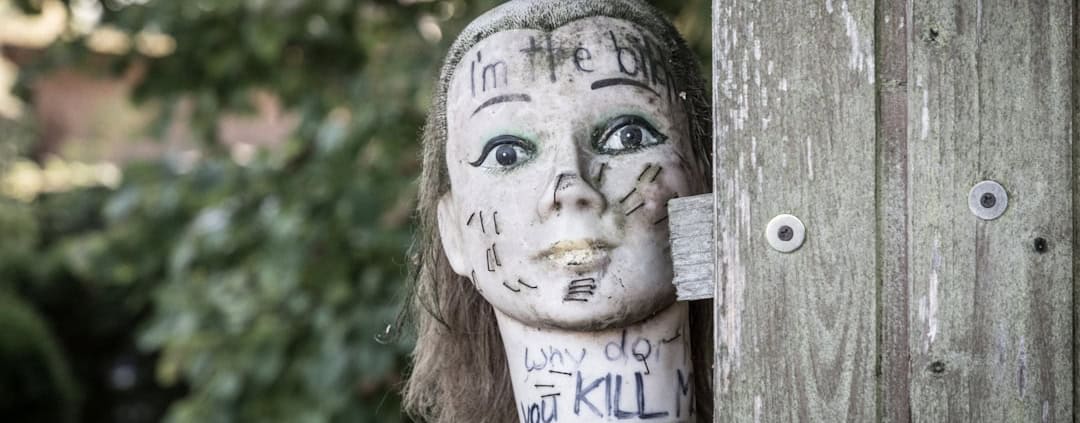The Healing Stages of Piercings: What to Expect
Piercings have been a form of body modification for centuries, with evidence of their existence dating back to ancient civilisations. Whether it is a simple earlobe piercing or a more intricate nose or navel piercing, the process of healing a new piercing is crucial to ensure its longevity and to prevent infection. The healing stages of a piercing can be divided into three main phases: the initial healing stage, the transition stage, and the final healing stage.
Each stage presents its own set of challenges and requirements, and understanding these stages is essential for anyone considering getting a new piercing or currently in the process of healing one.
Summary
- Piercing healing stages can be divided into initial, transition, and final stages, each with its own set of characteristics and challenges.
- During the initial healing stage, it is normal to experience redness, swelling, and tenderness around the piercing site, along with some discharge.
- The transition stage is marked by a decrease in discharge and a reduction in redness and swelling, indicating that the piercing is progressing towards full healing.
- Patience is crucial during the final healing stage, as the piercing may appear healed on the surface but still require more time to strengthen internally.
- Common problems during the healing process include infection, irritation, and rejection, which can be addressed through proper aftercare and seeking professional help if necessary.
- Aftercare tips such as cleaning the piercing regularly with saline solution, avoiding touching the piercing with dirty hands, and refraining from changing jewellery too soon can help ensure a smooth healing process.
- Embracing the beauty of healed piercings requires dedication to aftercare and patience through the various healing stages, resulting in a well-maintained and stunning piercing.
The Initial Healing Stage: What to Expect
Cleaning and Aftercare
It is essential to keep the piercing clean during this stage to prevent infection. Cleaning the piercing with a saline solution or a gentle antibacterial soap twice a day can help to keep bacteria at bay and promote healing. It is also crucial to avoid touching the piercing with dirty hands or allowing any harsh chemicals or products to come into contact with it.
Avoiding Contaminants
Additionally, it is recommended to avoid swimming in pools, hot tubs, or natural bodies of water during this stage to prevent exposure to bacteria and other contaminants that could hinder the healing process. During the initial healing stage, it is common for some discharge to be present around the piercing site. This discharge may be clear, white, or slightly yellow in colour and is a normal part of the body’s natural healing process.
Monitoring for Infection
However, if the discharge is accompanied by excessive redness, swelling, or pain, it may be a sign of infection and should be addressed by a professional piercer or healthcare provider. It is also important to avoid changing or removing the initial jewellery during this stage, as doing so can disrupt the healing process and increase the risk of infection. Following these guidelines and being patient during the initial healing stage is crucial for setting the foundation for a successful piercing healing journey.
The Transition Stage: Signs of Healing

The transition stage marks the period when the initial swelling and tenderness around the piercing site begin to subside, and the body starts to form a protective layer of skin around the jewellery. This stage typically occurs around the 4-6 week mark after getting pierced and can last for several months, depending on the individual’s healing process. Signs of healing during this stage include reduced redness and swelling, decreased sensitivity around the piercing site, and the formation of a crust or scab around the jewellery.
It is important not to pick or remove this crust, as it serves as a protective barrier for the new skin forming underneath. As the piercing continues to heal, it is common for some itching and mild discomfort to occur. This is a natural part of the healing process as the body works to repair and strengthen the skin around the piercing.
It is important to resist the urge to scratch or irritate the piercing during this stage, as doing so can lead to complications such as infection or delayed healing. Instead, gently clean the piercing as usual and avoid wearing tight clothing or accessories that may rub against or put pressure on the piercing site. It is also important to continue following aftercare guidelines and to be mindful of any changes in the appearance or sensation of the piercing during this stage.
While it can be tempting to assume that the piercing is fully healed at this point, it is crucial to exercise patience and allow the body to complete its natural healing process.
The Final Healing Stage: Patience is Key
| Healing Stage | Key Metric | Data |
|---|---|---|
| The Final Healing Stage | Patience | Key |
The final healing stage is the last phase of the piercing healing process and can last anywhere from a few months to a year, depending on the individual’s body and the type of piercing. During this stage, the protective layer of skin around the jewellery will continue to thicken and strengthen, and any remaining discomfort or sensitivity should gradually diminish. It is important to continue cleaning the piercing regularly during this stage, even if it appears fully healed, as bacteria can still pose a risk of infection until the skin has fully matured.
It is common for some piercings to experience occasional flare-ups or mild irritation during the final healing stage, especially if they are bumped or knocked accidentally. While these incidents can be frustrating, it is important not to panic and to continue following aftercare guidelines to support the body’s healing process. If any concerns arise during this stage, such as persistent redness, swelling, or discharge, it is important to seek advice from a professional piercer or healthcare provider rather than attempting to self-diagnose or treat the issue.
Common Problems and How to Address Them
Despite best efforts, complications can arise during the piercing healing process. One common issue is infection, which can manifest as excessive redness, swelling, warmth, pain, and discharge that is yellow or green in colour. If infection is suspected, it is important to seek professional help immediately to prevent further complications.
Another common problem is hypertrophic scarring, which appears as raised bumps around the piercing site. While these bumps are not usually harmful, they can be unsightly and uncomfortable. Applying tea tree oil or seeking advice from a professional piercer can help address hypertrophic scarring.
Additionally, allergic reactions to jewellery materials can occur, leading to symptoms such as itching, redness, and irritation around the piercing site. If an allergic reaction is suspected, switching to hypoallergenic jewellery made from materials such as titanium or niobium can help alleviate symptoms. It is important not to ignore any issues that arise during the healing process and to seek professional guidance when needed.
Aftercare Tips for a Smooth Healing Process

General Aftercare Tips
Some general aftercare tips include cleaning the piercing twice a day with a saline solution or gentle antibacterial soap, avoiding touching the piercing with dirty hands, refraining from swimming in pools or natural bodies of water until fully healed, and avoiding tight clothing or accessories that may irritate the piercing site. It is also important to avoid using harsh chemicals or products near the piercing and to refrain from changing or removing the initial jewellery until fully healed.
Monitoring Your Body’s Response
In addition to these general aftercare tips, it is important to listen to your body and pay attention to any changes in sensation or appearance around the piercing site. If any concerns arise during the healing process, seeking advice from a professional piercer or healthcare provider can help address issues before they escalate.
Allowing the Body to Heal
It is also important to be patient and allow the body to complete its natural healing process without rushing or interfering with it.
Embracing the Beauty of Healed Piercings
In conclusion, understanding the stages of piercing healing is essential for anyone considering getting a new piercing or currently in the process of healing one. The initial healing stage comes with symptoms such as swelling and tenderness, while the transition stage marks signs of healing such as reduced redness and crust formation. The final healing stage requires patience as the protective layer of skin around the jewellery continues to strengthen.
Common problems such as infection, hypertrophic scarring, and allergic reactions can arise during the healing process and should be addressed promptly by seeking professional guidance. By following proper aftercare guidelines and being patient throughout each stage of the healing process, individuals can promote a smooth and successful healing journey for their piercings. Embracing the beauty of healed piercings requires dedication and mindfulness towards one’s body’s natural healing process.
With proper care and attention, healed piercings can become a lasting form of self-expression and adornment for years to come.
If you’re interested in learning more about body piercing, you might want to check out this article on the top 10 FAQs about body piercing from The Piercing Places. This informative piece covers common questions about the piercing process, aftercare, and more. It’s a great resource for anyone considering getting a new piercing or wanting to learn more about the topic.
FAQs
What are the general healing stages for a piercing?
The general healing stages for a piercing are: the initial healing stage, the transitional healing stage, and the healed stage.
What happens during the initial healing stage of a piercing?
During the initial healing stage, the body begins to form a protective layer of skin around the piercing, and the area may be red, swollen, and tender to the touch. It is important to keep the piercing clean and follow aftercare instructions during this stage.
What occurs during the transitional healing stage of a piercing?
During the transitional healing stage, the initial redness and swelling should start to subside, and the piercing may begin to feel less tender. The protective layer of skin continues to form, and the piercing may start to itch as it heals.
How long does it take for a piercing to fully heal?
The time it takes for a piercing to fully heal can vary depending on the type of piercing and individual healing factors. Generally, it can take anywhere from a few weeks to several months for a piercing to fully heal.
What are some common signs of a healing piercing?
Common signs of a healing piercing include reduced redness and swelling, less tenderness, the formation of a protective layer of skin, and a decrease in discharge or crust around the piercing.
What are some signs that a piercing may be experiencing complications during the healing process?
Signs that a piercing may be experiencing complications during the healing process include persistent redness, swelling, pain, excessive discharge, and the presence of pus. If you suspect your piercing is not healing properly, it is important to seek advice from a professional piercer or healthcare provider.



